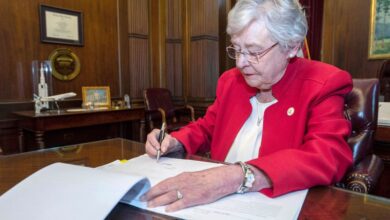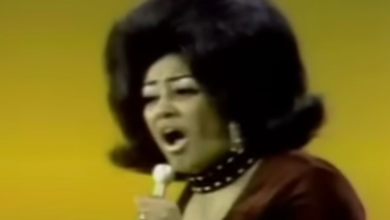Diversity is Not About Nouns: Finding Commonalities with the Disabilities Community

As a comedian, I have found that comedy is particularly effective at leveling the playing field when it comes to communication with an audience. But, as a ‘Sit-Down’ comic (born with Cerebral Palsy – C.P.), I understand the subtleties between expressing disability as a flaw rather than a challenge. Regardless of one’s abilities, comedy, at its best, can unite people through language and storytelling: “The bigger your flaws the better your comic character,” says Jerry Corley, founder of The Stand-Up Comedy Clinic. “Basically, in comedy, your flaws become your power,”
Outside of the comedic arena, however, there are numerous ways that individuals in the non-disabled community can employ empathic language and behaviors to more compassionately connect with their disabled friends, colleagues and, even, strangers.
To start, it is important to embrace everyone’s uniqueness. Diversity, communication, inclusion, and accommodation are essential for the non-disabled community to effectively embrace the disabled community. Disability touches every demographic category – gender, age, race, sexual orientation, etc. and impacts most people eventually either through accident, illness, or aging. In total, 56 million Americans currently have a disability, representing 63 percent of the population.
“Diversity is not about nouns,” says Jd Michaels, former EVP of Diversity for BBDO Worldwide, “When we speak of one another using verbs, what we do versus any outward descriptor, we begin to find parallels and commonalities across demographics and categories. Being judged upon sight is a burden for everyone, but during COVID lockdown, I worked with many people over ZOOM and did not learn of their disability for nearly a year,” Jd continues. “The freedom that these co-workers experienced, and the enthusiasm of the reception of their work and team participation, proved their effectiveness on a level playing field.”
While 72 percent of organizations have made DEI (Diversity, Equality, Inclusion) a priority, only 68 percent of those groups have mentioned disability as an area of focus or concern. In comparison, 93 percent mention race. Similarly, while 78 percent of groups have provided DEI training to staff, only about one-third (35 percent) have included training on disability.
Communication is Key
According to the Illinois Department of Human Services, one golden rule of etiquette is to ‘Always Ask Before Giving Assistance.’ Just because a person has a disability, that doesn’t mean that s/he necessarily needs or wants your assistance. One disabled woman tells of her negative experience: “When I walked on crutches, I was once knocked down by two little old ladies who were going to ‘help’ me walk on an icy sidewalk. Without asking, they came up, grabbed me, threw me off balance, and down I went!”
Inclusion & Accommodation (Or Lack Thereof)
It is also critically important to develop a business or organization that is accessible for ALL. While the Americans with Disability Act (ADA) has been law since July 26, 1990, there is still much work to be done to provide comprehensive accessibility. Further, while disability impacts people of all backgrounds, people with multiple marginalized identities (i.e. people of color and/or English language learners who also have a disability) face double or triple discrimination. They are also more likely to experience homelessness, live in poverty, or become incarcerated.
Members of the non-disabled community should also refrain from showing pity or being patronizing. “To be a better ally to people with disabilities, start by educating yourself on ableism and avoid buying into stereotypes or perpetuating stigma. Learn about all types of disabilities, honor intersectionality, and diversify your news and entertainment sources,” says Ashley Rodriguez, Director of Accessible Communications for the City of Los Angeles Department on Disability. “When we do our part to create accessible content and remove systemic and physical barriers, we create space in our communities that promotes diversity, access, and inclusion for all.”
Using language appropriately is also key. People First Language, for example, emphasizes the person, not the disability. Instead of saying ‘a disabled man,’ it is more respectful to refer to the person as ‘a man with a disability’ or ‘a man who has a disability.’ However, the best way to show respect is if they indicate a preference,,according to 12 Simple Ways to Be More Inclusive of People with Disabilities.
“What is important is to ASK. If you are not sure of the preferred language, ask what that person prefers,” says Anita Hollander, National Chair, SAG-AFTRA Performers With Disabilities.“ Even within the disability community, we do not all agree on what we prefer! Some prefer disability-first language (“I am a disabled actor”) while others prefer person-first (“I am an actor with a disability”),” she continues. “I personally don’t care what people call me as long as they call me for the gig!”
Hollander continues: “There are words that are constantly needing correction: newscasters still insist on saying “wheelchair-bound” no matter how many times we push back. The proper & most accurate term is “wheelchair user.” (Most wheelchair users are not physically chained or tied to their chairs (unless it’s a kinky choice). It’s that simple. Deaf and Hard of Hearing are both acceptable terms, as are Blind and Low Vision.“
So, how should you treat a person with a disability? “Treat them like any other human being. The same way you would want to be treated. With equality, dignity, and respect. It’s that simple,” says Eileen Grubba – Actress, Writer, Producer, Advocate.
A glossary of appropriate terms is available by contacting the following:
Christine Bruno, Disability Equity Consultant: BrunoDisabilityInclusion.com
Casting Society of America (CSA), Diversity Department: equity@castingsociety.com
Danielle Pretsfelder at DPD Casting: danielle@dpdcasting.com
About the Author: Dawn Grabowski is a fellow with The Loreen Arbus Accessibility is Fundamental Program, a fellowship created with Women’s eNews to train women with disabilities as professional journalists so that they may write, research and report on the most crucial issues impacting the disabilities community. Dawn is also an Actress, Filmmaker, Content Creator, Speaker, Voiceover Artist, Producer, & Sit-Down Comic because she’s not qualified to stand. Born with Central – Nervous Disorder Cerebral Palsy, the industry and the world label her as a Person/Performer With Disability (PWD), but she believes labels are for jars and not for people. IG Handle: @grabowskidawn





